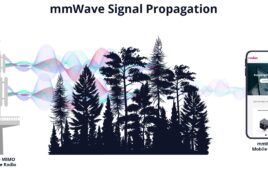Verizon is aiming to launch fixed wireless 5G market trials in four states beginning at the start of the new year, the carrier confirmed Thursday.
According to documents filed with the FCC, Verizon has asked for permission to conduct market trials in the 28 GHz band in Houston and Cypress, Texas, Ann Arbor, Michigan, Brockton and Natick, Massachusetts, and near its Basking Ridge headquarters in Bernardsville, New Jersey. The carrier has asked for a six month permit for the trials, beginning January 2, 2017 and running through June 2.
The applications, though sparse, indicate the experimental operations will include equipment from various manufacturers consisting of fixed base stations and mobile terminals that will employ directional beamforming antennas.
A Verizon spokesman on Thursday confirmed the proposed tests are “related to our pre-commercial fixed wireless trials” recently mentioned by Verizon CEO Lowell McAdam, and noted the carrier has “pre-commercial trials underway in other locations throughout the (United States) at various stages of development.” The spokesman declined to provide the locations of the other trials.
The confirmation follows comments from McAdam at an investor conference early this month in which he said the carrier is working toward a first quarter launch for trials of its pre-commercial fixed wireless technology. At the time, McAdam revealed Verizon is planning to deliver 1 gbps broadband service alongside an over-the-top bundle as part of the 5G trial, but won’t be charging for the service. Instead, he said, Verizon will use the trials as a learning experience to figure out the distance between the transceiver and receiver in a 5G environment.
“Let’s be clear on what we mean by 5G – we call it wireless fiber,” McAdam clarified at the conference. “This will allow you to stop anywhere from 200 feet to 1000 feet from the home … and make it a wireless last leg into the home.”
Verizon’s decision to stick to the 28 GHz band in its trials will come as little surprise to those who have been tracking the carrier’s moves, particularly its recent acquisition and lease of assets and spectrum from XO Communications. Back in September, Verizon Director of Network Infrastructure Planning Sanyogita Shamsunder indicated the carrier’s deal with XO Communications to lease 28 GHz spectrum will give it more flexibility to test in multiple markets. At the time, she declined to provide detail about the pilots, but noted Verizon would conduct tests across different types of geography in several locations to give it confidence the technology will work across a broad variety of markets. And judging from the FCC applications, that certainly seems to be the case here.
Of course, Verizon isn’t the only one working on 5G trials.
AT&T recently announced a partnership with Intel on a millimeter wave 5G business trial in which it will provide a 5G network to power multiple experiences – including Internet access, VPN, Unified Communications applications, and 4K video streams – to one of Intel’s offices in Austin.
Sprint this week also indicated it is closing in on 1 gbps wireless speeds by using a combination of carrier aggregation, MIMO, 256-QAM, and its new High Performance User Equipment (HPUE) technology.




